![Jan Stradomski. [Manuscripts and Texts. Studies of the Church-Slavonic Literary Culture of the Grand Duchy of Lithuania and the Polish kingdom to the End of the Sixteenth Century]. Kraków: Scriptum, 2014 (Krakowsko-Wileńskie Studia Slawistycznie, 10)](/api/image/getissuecoverimage?id=picture_2016_29769.gif)
![Jan Stradomski. [Manuscripts and Texts. Studies of the Church-Slavonic Literary Culture of the Grand Duchy of Lithuania and the Polish kingdom to the End of the Sixteenth Century]. Kraków: Scriptum, 2014 (Krakowsko-Wileńskie Studia Slawistycznie, 10)](/api/image/getissuecoverimage?id=picture_2016_29769.gif)
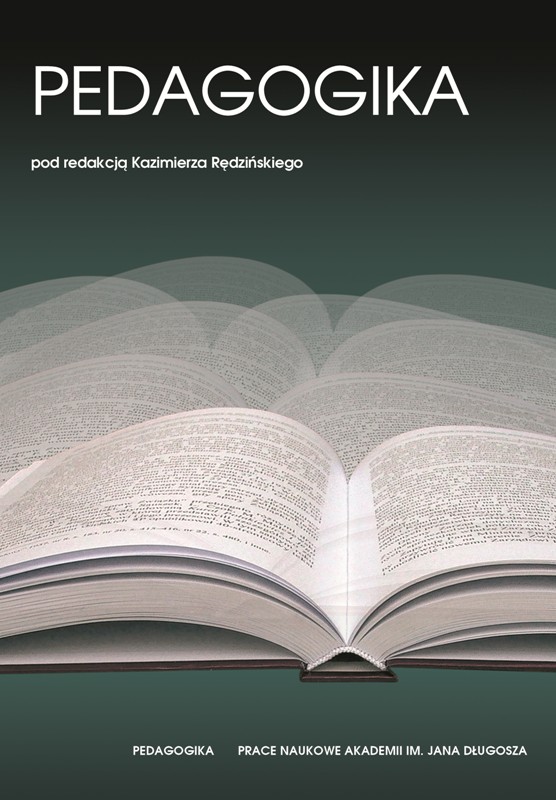
Keywords: text; culture; culture studies text; lexicography; linguocultural studies; linguocultural dictionaries;entry;
The article presents a new type of lexicographic publications, that is linguocultural dictionaries, with focus on their application in the teaching process. Entries in linguocultural dictionaries contain information which is important from the perspective of the presented culture as it describes artefacts of culture, figures important in history and culture, traditions and customs of the given nation. Such entries very often reflect the values common to the nation whose language students are learning, bringing them closer to its mentality. Information found in the entries of the dictionaries analysed in the article helps students to use the foreign language properly, that is in line with the way a typical representative of its culture interprets the world. Understanding the mentality of a given community makes it possible for the learner to move in its cultural space more confidently.
More...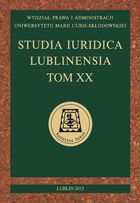
A Book Review
More...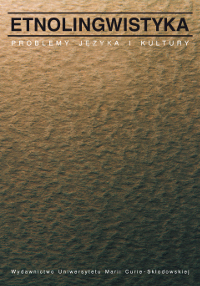
Keywords: dialectal texts from Matiaszówka; accounts of the cosmos
Opublikowanych 31 tekstów o kosmosie pochodzi ze wsi Matiaszówka. Zostały zebrane w lutym i październiku 1986 roku, a przy zapisie materiałów autorka zastosowała dwie techniki zbierackie. Jedna polegała na zadawaniu pytań ze specjalnego kwestionariusza dotyczącego kosmosu, opracowanego w Zakładzie Języka Polskiego UMCS. Drugą techniką była rozmowa kierowana. W efekcie powstał ciąg swobodnych opowiadań (o tym i „tamtym” świecie, o słońcu, księżycu i gwiazdach, o wietrze, burzy i piorunach, o ogniu, tęczy i innych) oraz odpowiedzi na pytania. Autorka przy nadawaniu tytułów kierowała się kryterium tematycznym.
More...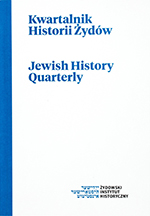
Keywords: converts; conversion; historiography; anti-Semitism; “assimilation”
At the beginning of the 20th century, about a dozen volumes were written in Polish, Yiddish and Hebrew in Poland about the converts from the Judaic to Christian faith. This subject united representatives of three milieux whose customary contacts used to bee limited to ideological wars and fierce battles fought in the press: (1) the promotors of Jewish ethnic movements and culture autonomy, (2) the so-called “assimilators”, and also (3) Polish anti-Semites. The objective of this article is to discuss the main theses concerning Jewish converts and the conversion process, published during the “conversion fever” in the years 1904-1938; and, first of all, to define the metahistory represented by each of the three groups and their legacy in contemporary historiography. As I am going to demonstrate in this article, the converts in these texts are like a litmus paper testing and contesting the limits of ethnic identity, both Jewish and Polish. The emotions they aroused a century ago stemmed precisely from the fact that they proved to be a challenge to the perception of these boundaries as rigid, clearly defined and inviolable.
More...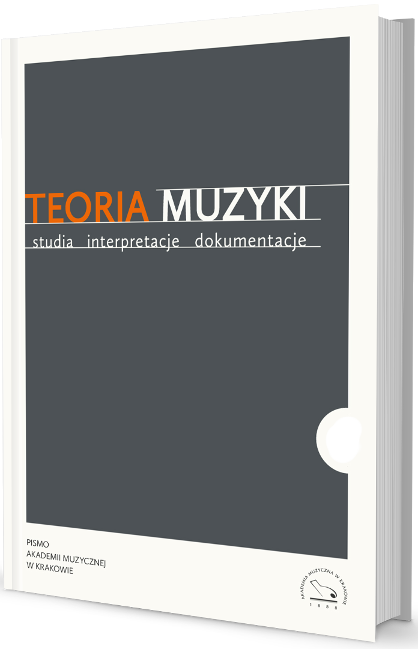
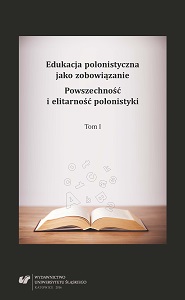
Keywords: culture text; university teaching; high school teaching; further training course for teachers;
This publication discusses the consequences of text-oriented model of education in three aspects: on the level of higher education, in the work of active Polish language teachers and in the context of the current needs of high school students. These issues are presented on the basis of the author’s own experience as an academic teacher, in reference to opinion of her students, and also of the other Polish language teachers from Świętokrzyskie Voivodeship. The text‑oriented model of education raises an urgent need to adapt higher education curricula to new competence requirements placed upon teachers. The graduates of the Polish studies should be equipped with the ability to interpret complex texts on culture reaching beyond the known methodologies of explanation of literary work. Short training courses in the interpretation of cultural texts are proposed for the secondary school teachers. The author discusses the example of an eighty-hour course entitled Interpretation of Cultural Texts. With regard to the needs of high school students, the author recommends preparation of manuals and handbooks adapted to the new formula of the matura examination. The author emphasizes the importance of teaching methods adequate to the interdisciplinary nature of the discussed issues and draws special attention to the qualities of poetic ekphrasis in school teaching.
More...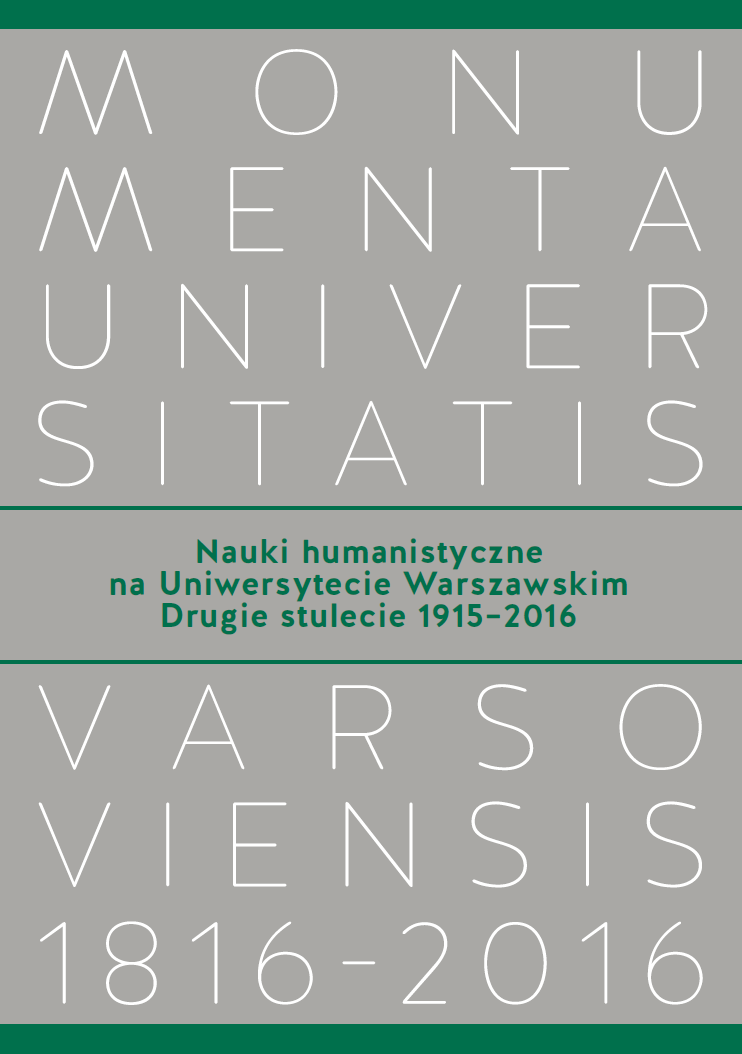
Keywords: Uniwersity of Warsaw; humanities at the University of Warsaw; history of science
History of the humanities at the University of Warsaw presented in two volumes covering first centenary (1816–1915) and second centenary (1915–2016).First volume contains history of humanities from the founding of the University through its different changes during the nineteenth century under the Russian rule till the restoration of the Polish University in 1915.Second volume presents the interwar period as well as the war times. Its second part consists of seven interviews with the illustrious representatives of humanities talking about postwar history of the University and its people.
More...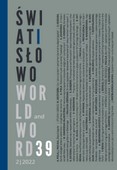
Keywords: literature; dialect; mode of expression; Cieszyn Silesia; Polish language; Czech language;
The present article entitled Literary and Paraliterary Dialect Texts from the Czech-Polish Border Region is devoted to authorial texts stylized in a dialect. It concerns the Silesian dialect in the Těšín region, on both sides of the state border (i.e. in the Czech Republic and Poland). The research material comes from shorter literary texts (prose) published in the regional press or in book forms. The authors (of these texts) are two women who are amateurs in literary production. One comes from the Czech part of Těšín, the other from its Polish part. The focus of the article is on the modifications of the dialect at the level of lexemes and phrases (phraseologisms), but also on morphological and phonetic phenomena, and consequently on the “orthography“ of the dialect texts. The analysis shows that although both authors write in the same dialect, each of them does it a little differently. The influence of the standard language – Polish or Czech – is evident in their texts. On the other hand, it should be emphasised that writing in a dialect still has its sense: dialect is an attractive linguistic code, rich in expressive devices, and readers find pleasure in being able to identify with this specific regional language, which they themselves use to a large extent.
More...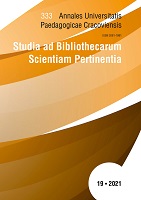
Keywords: popular texts; popular literature; popular genres; Kielce; Kielce Newspaper; second half of the 19th century; province; communication strategies;
The subject of this paper is popular literary and paraliterary texts published in Gazeta Kielecka (Kielce Newspaper) in the second half of 19th century. The aim of this research is to outline the general picture of popular literature in the provincial area of the Kielce Governorate. Analyzed topics are related to the ideological formation of the journal’s program line. Furthermore, this study draws attention to the general types and genres of popular texts appearing in this periodical, which often turn out to be difficult to unambiguously assign. The author describes the role of such texts as well as the journal’s communication strategies. Morever, further research could answer questions about the similarities and differences in the role of popular literature in the province and in large urban center, which would shed new light on the center periphery relation.
More...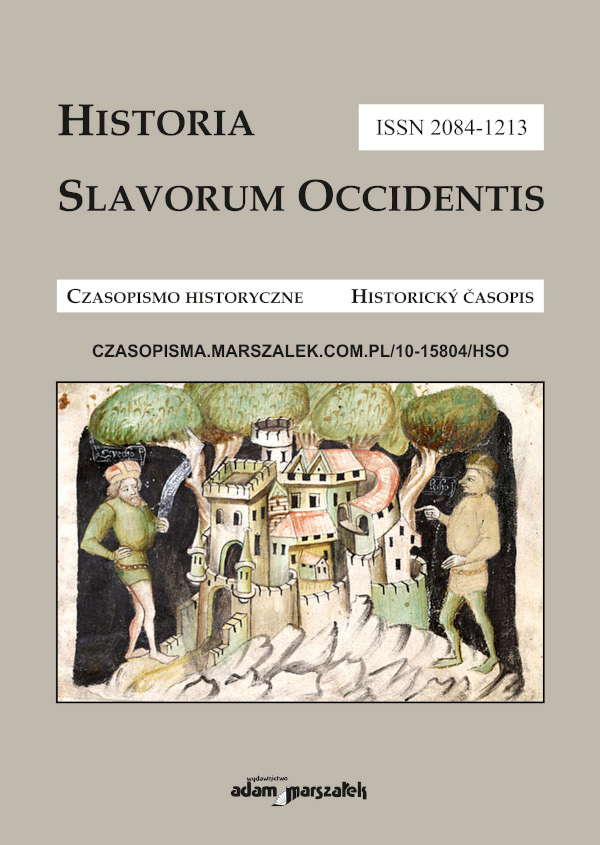
Keywords: book review; Marian Gumowski;
Pomnik spiżowy. Uwagi w kontekście pracy Mariana Gumowskiego Siła do ujarzmienia:teksty wybrane, Warszawa 2021
More...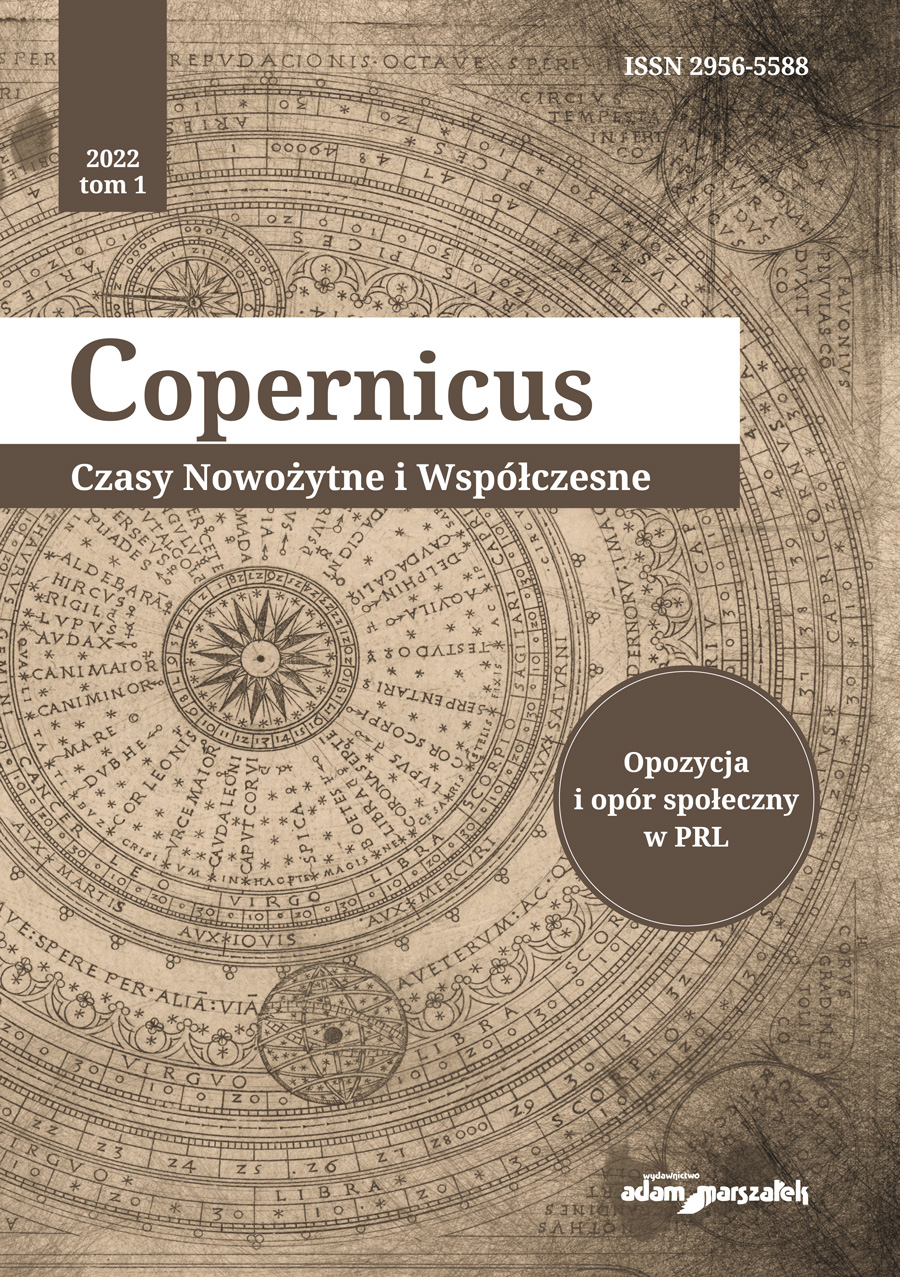
Keywords: Orange Alternative; surrealism; Surrealist Manifesto; Manifesto of Socialist Surrealism; Waldemar „Major” Fydrych;
«Orange Alternative program texts and French surrealism manifestos » are a contribution to a detailed analysis of the Orange Alternative program texts in terms of surreal inspirations, many of which can be found not only in the Manifesto of Surrealist Socialism, but in Waldemar Fydrych’s books: Hokus pokus, or the Orange Alternative, written together with with Bogdan Dobosz in 1989. Żywoty Mężów Orangeowych- 2001, Krasnoludki i gamonie- 2006, Major- 2013. The author analyzes various levels of relations between the most important assumptions of the French surrealism contained in the manifestos and the program texts and literary works of Waldemar «Major» Fydrych, taking into account his ties with France. He mentions selected contexts of the activity of the New Culture Movement and the Orange Alternative, referring to the meaning of the characters, ideas and program content. He does not forget about the role of manifestos in the history of the European avant-garde (including the Manifesto of the Communist Party, but futuristic and Dadaist) and the universal dimension of the high-profi le slogans of surrealism, both in Europe and in Poland. He evokes the notion of «socio-political surrealism» and its universal dimension, as well as situates the actions of the Orange Alternative between Solidarity and the authorities of the time.
More...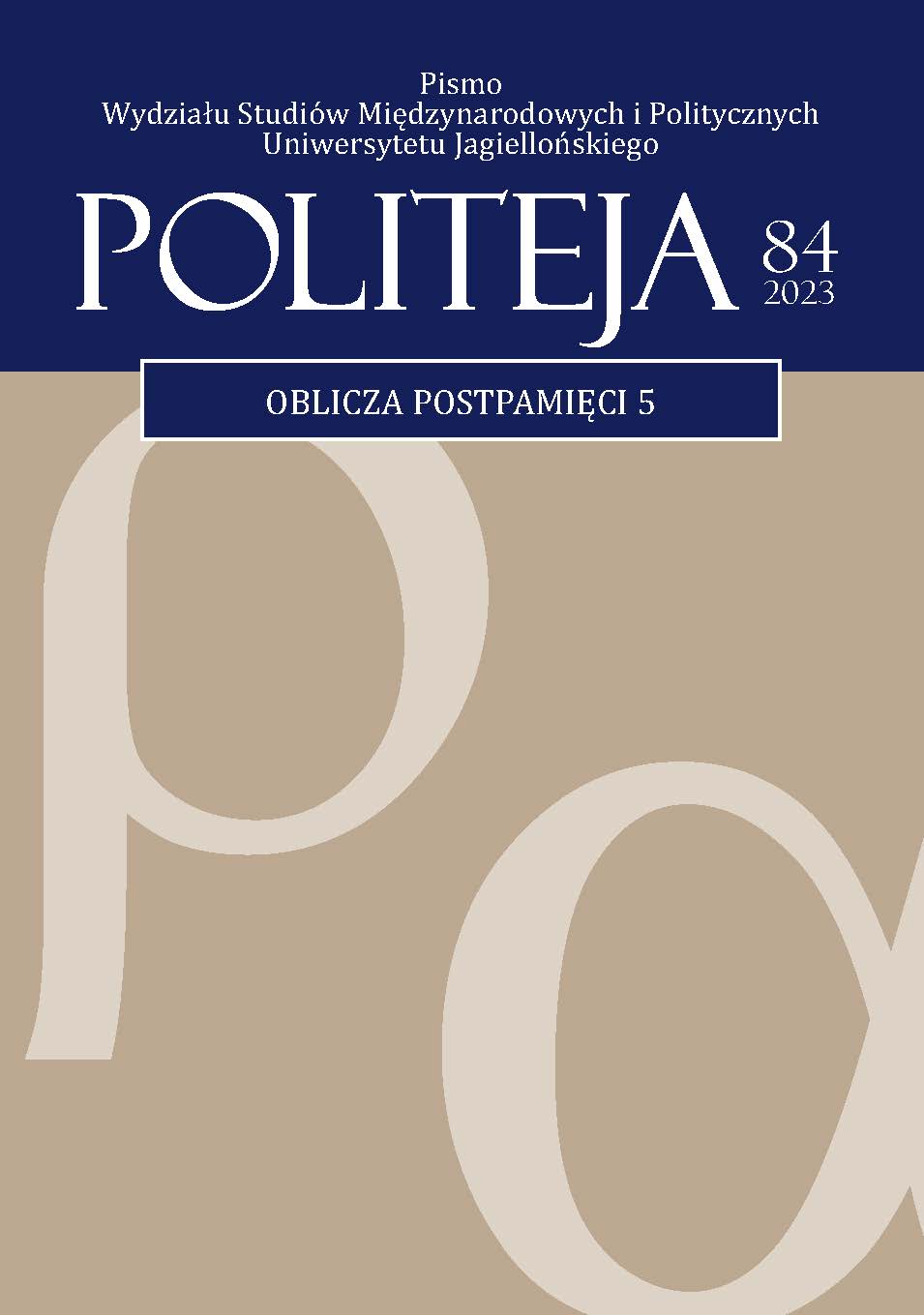
Keywords: Spanish Civil War; reportage; translation; postmemory; paratexts
The article presents the context of the Spanish edition of the Ksawery Pruszyński’s collection of reportages, En la España roja, written during the writer’s trip to Spain as a press correspondent in 1936, in the early months of the civil war. Despite the passage of time, Pruszyński’s observations still hold interest and offer insight to the Spanish reading public. The aim of the article is to examine how the ongoing debates surrounding the Spanish Civil War, intertwined with postmemorial discourses, influence both the publisher’s presentation of the book and its reception by critics. To accomplish this, the paratexts of the Spanish edition of Pruszyński’s work will be discussed.
More...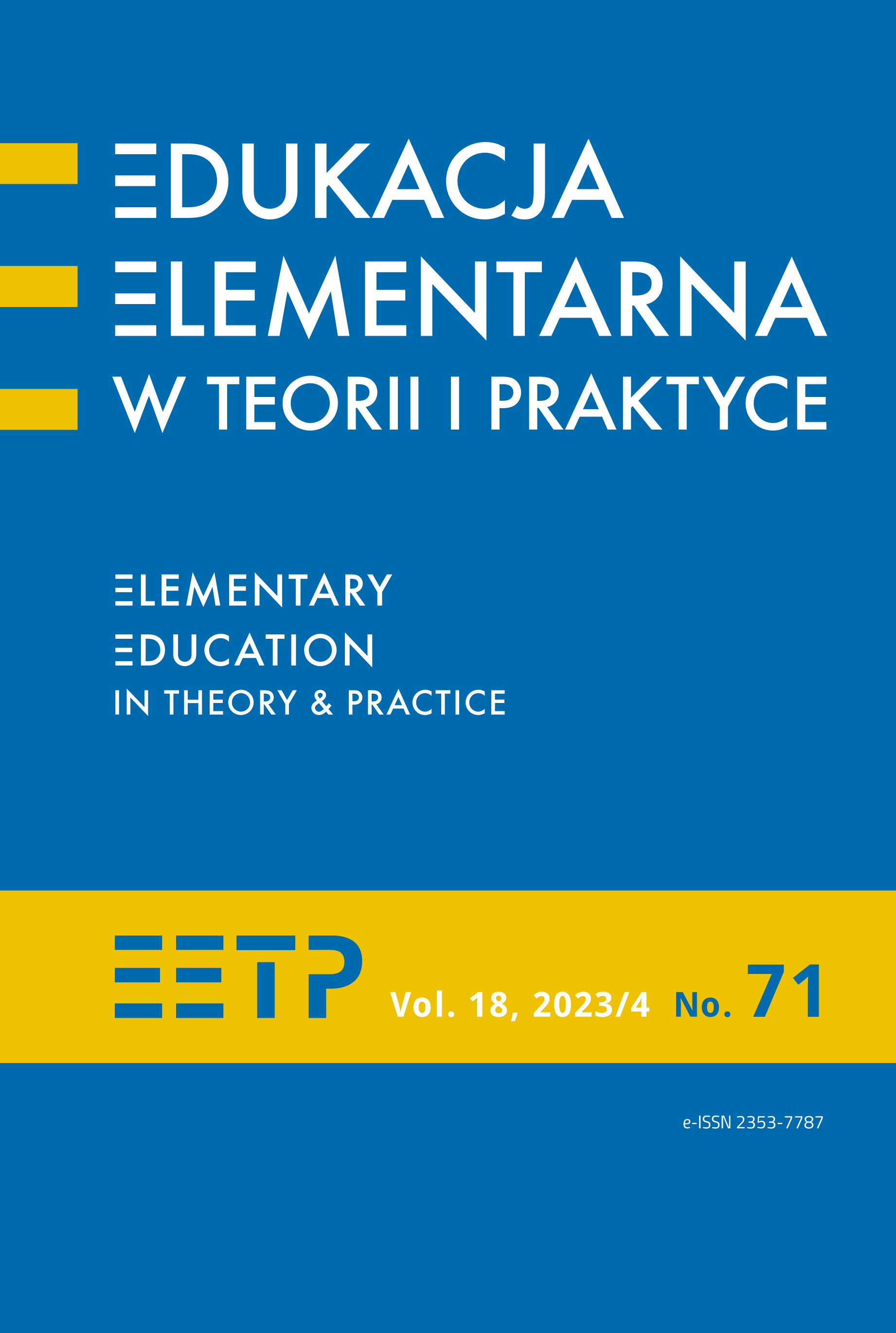
Keywords: child; children’s literature; Anthropocene; language; elementary education; education for the climate;
The contemporary social crisis requires deep reflection and making the right decisions to counteract the effects of the changes that have taken place. The Anthropocene, as the time when man became the force responsible for the transformations taking place on Earth, poses specific challenges to us, living in the present times. The aim of the ar- ticle is to indicate the reason for the actions taken to prevent climate change by presenting specific literary texts that fulfill this require- ment. For the needs of the analyses, the document analysis method was used. Bruce’s experience began with defining the concept of social crisis. In the next part, the climate crisis was pointed out as a contem- porary existential threat. The opinion of the European Union in this regard was quoted. The role of education as a guarantee of changes in the process of transforming the ecological awareness of modern man was emphasized. As a result of the analysis of documents, the rank of Polish language education in this area was indicated: with full convic- tion and responsibility, a literary text was established as a modulator of awareness attitudes; methods supporting the development of eco- logical attitudes in the education process were presented. The essence of creative work with a literary text was also emphasized. Specific, se- lected literary texts from the suggested reading list for grades 1–3 of primary school were recommended, the content of which develops pro-ecological and cognitive competences, taking into account the challenges of the Anthropocene.
More...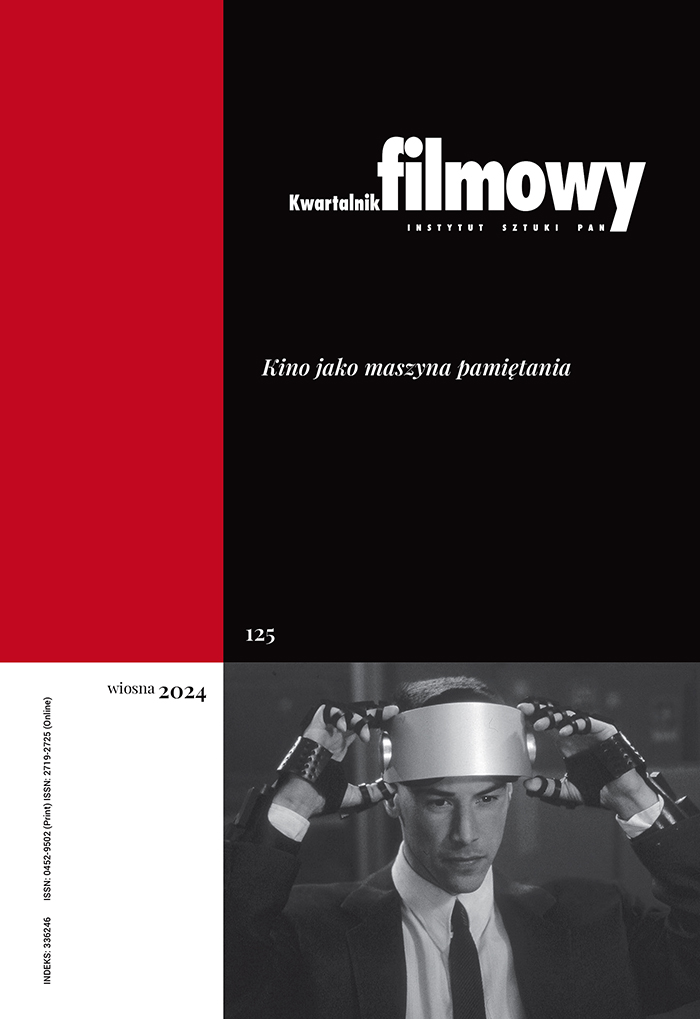
Keywords: comics; interwar period; Charlie Chaplin; Adolf Dymsza; Kazimierz Krukowski; Pat and Patachon;
In the comic strips published in the Polish press of the interwar period, a distinct current was represented by humorous stories about film comedians. This article dis-cusses “cartoons” – as the press comic strips were calledat the time – devoted to Charlie Chaplin, Pat and Patachon,and comic incarnations of the cinema and cabaret starsKazimierz “Lopek” Krukowski and Adolf “Dodek” Dymsza.Most of the works discussed here emphasize Eulenspiegelqualities of the on-screen comedians, which, especially inthe case of Chaplin, was a return to his cinematic origins.There are also reminiscences of specific films in some ofthese cartoons, as well as – especially in the case of Dodek –attempts to adapt the specific language used by his char-acter. It is difficult to determine to what extent this secondlife that the stars of the screen found in the press matchedthe reception of their movies. However, it certainly en-hanced their popularity by minimizing the barriers be-tween the inaccessible cinema idols and the public, whoimaginatively transposed their adventures into the famil-iar Polish realities.
More...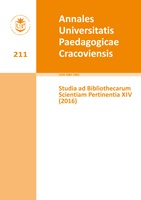
Keywords: historiography; history; religious orders; the Dominicans;
Historiographical literature functioning in church circles, and particularly monastic ones, is an interesting area of analysis of the meaning of historical writing for these communities. Orders built their identity by referring to both the spiritual values and ethical, legal and historical ones. Relying on the written word, so typical for religious communities, indicates the use of historiography in many contexts, for example in sacred literature, texts devoted to commemoration of others, preaching, historical or hagiographical literature, but also pragmatic texts. A model example are the Dominicans, the order holding a dense network of monasteries on lands belonging to the Crown and the Grand Duchy of Lithuania. All specific historiographical factors of religious texts, their goals and roles, are discussed on the example of Lithuanian province of the order fighting for its independence. Dominican authors of historical works addressed them both to the religious and external reader, used them in the preaching work by giving them the character of utility, correlated with the pastoral activity. In historiographical works it was important to combine the element of historical teaching with didactic one, the latter playing a very important role. It seems that recalled exemplifications clearly illustrate the importance of historiography for determining the location of this order in the world, and illustrate the specificity of its existence in the broader context of culture model.
More...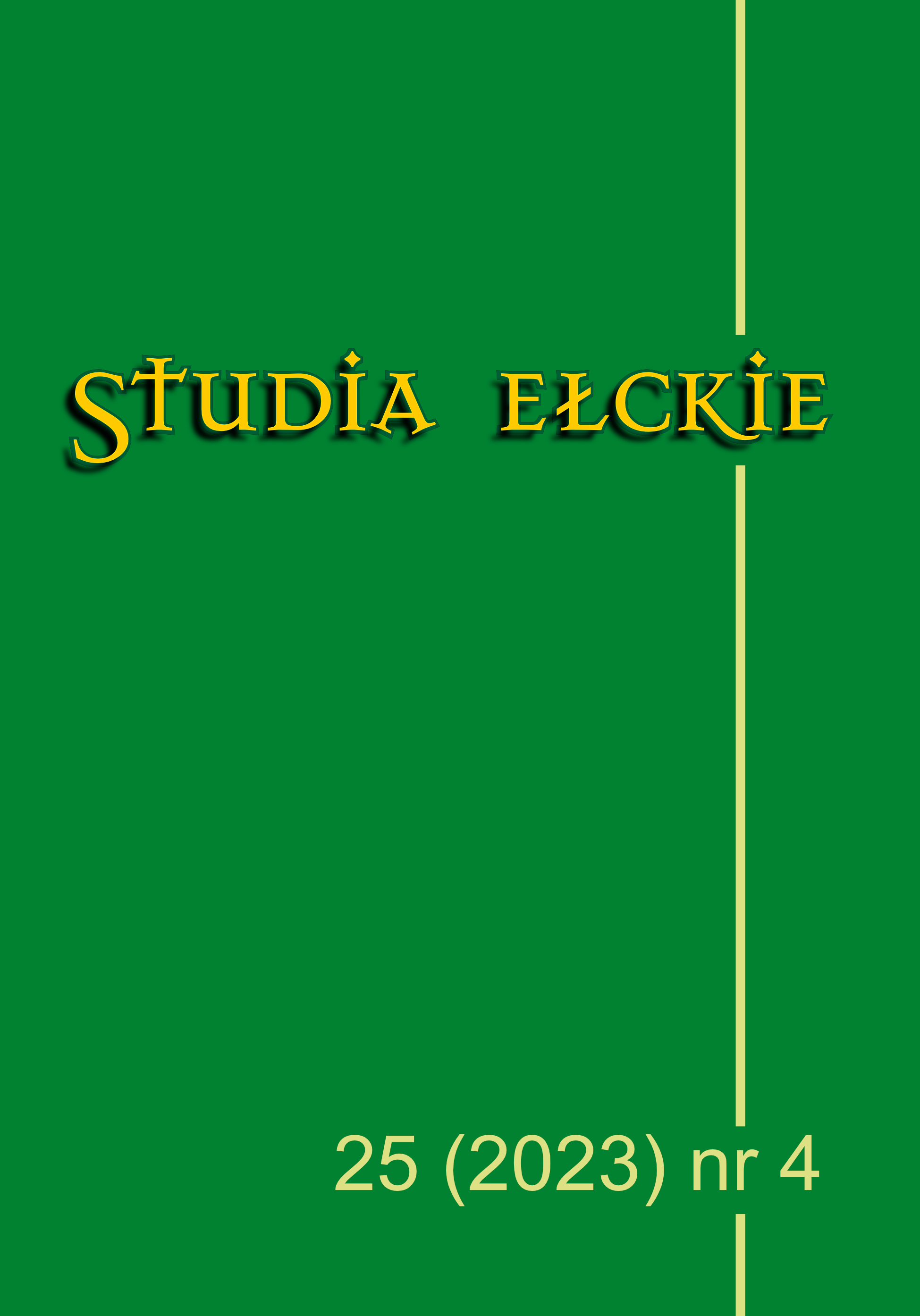
Keywords: Bishop Jerzy Mazur; “Martyria”; publications; texts; journal; Ełk diocese;
The article is devoted to the publications of Bishop Jerzy Mazur, whichwere published in the monthly „Martyria” in 2003-2023. It contains a full listof the bishop’s texts, their arrangement according to text types and an analysisof the collected material. It also informs about the degree of Episcopal authority exercised through writing and publishing activities. As a result of organizingthe materials, which number 157 in total, nine types of texts were distinguishedand discussed: homilies, letters, pastoral word, word during the Mass, inter-views, messages and information, decrees, invitations and announcements ofevents, and wishes.
More...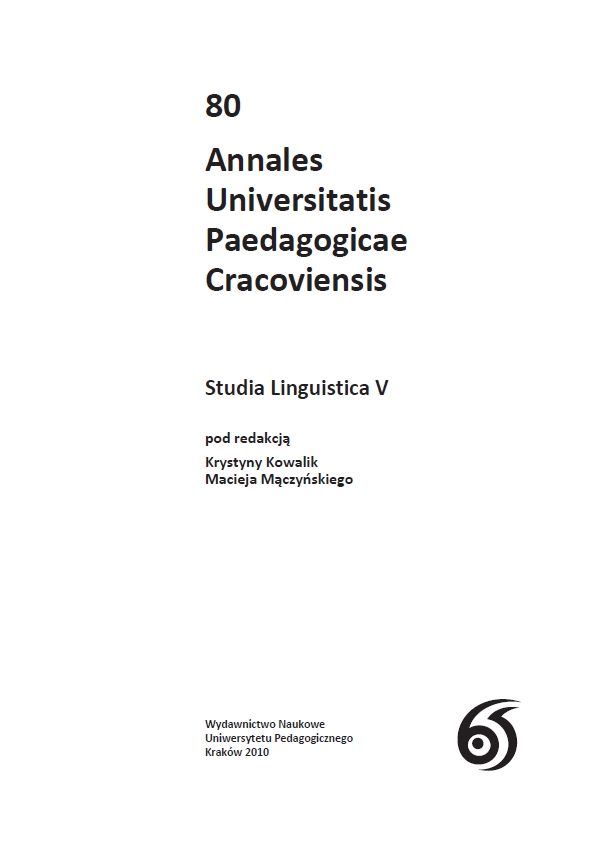
The article shows the wealth of colloquial language features in the city environment through the presence of texts in the city reality which are designed for collective receivers/recipients(eg. sign-board, information advertising, price labels, etc.). In the research, the components revealing descanting in the urban language (dialectal and sociolectal features) were found, aswell as the associated evaluation of objects and phenomena, colloquiality or even familiarity of idea transfer, and free realisation of orthographic and stylistic norms. Urban texts beartestimony of frequent language taboo breaking in the original sphere as well as in the area violating tactfulness and politeness canons, up to violation of decency and modesty. In thethesis, the changes in the sphere of native words meaning (neologisms and neosemantisms) and examples of introducing allogenic lexemes (orientalisms) are discussed. The important feature of the examples analysed is ambiguity, present in the lexical area as well as in the global apprehension of the message, which could decide about the language game played with receivers.
More...![Katarzyna Chałubińska-Jentkiewicz, Cyber odpowiedzialność. Wstęp do prawa cyber bezpieczeństwa [Cyberresponsibility. An Introduction to Cybersecurity Law], wydanie drugie uaktualnione i poprawione,Wydawnictwo Adam Marszałek, Toruń 2023](/api/image/getissuecoverimage?id=picture_2024_85144.jpg)
Keywords: book review; Katarzyna Chałubińska-Jentkiewicz;
Katarzyna Chałubińska-Jentkiewicz,Cyberodpowiedzialność. Wstęp do prawacyberbezpieczeństwa [Cyberresponsibility.An Introduction to Cybersecurity Law /Киберответственность. Введение в законо кибербезопасности], wydanie drugieuaktualnione i poprawione, Wydawnictwo Adam Marszałek, Toruń 2023, ss. 482
More...![Sylwia Czubaj-Kuźmin, Rocznice katyńskie. Rytuał polityczny w polskiej kulturze pamięci [Katyn Anniversaries. A Political Ritual in the PolishCulture of Remembrance ], wydanie drugie poszerzone, Wydawnictwo Adam Marszałek, Toruń 2024](/api/image/getissuecoverimage?id=picture_2024_85145.jpg)
Keywords: book review; Sylwia Czubaj-Kuźmin;
Sylwia Czubaj-Kuźmin, Rocznice katyńskie. Rytuał polityczny w polskiej kulturze pamięci [Katyn Anniversaries. A Political Ritual in the PolishCulture of Remembrance ], wydanie drugie poszerzone, Wydawnictwo Adam Marszałek, Toruń 2024, ss. 478
More...